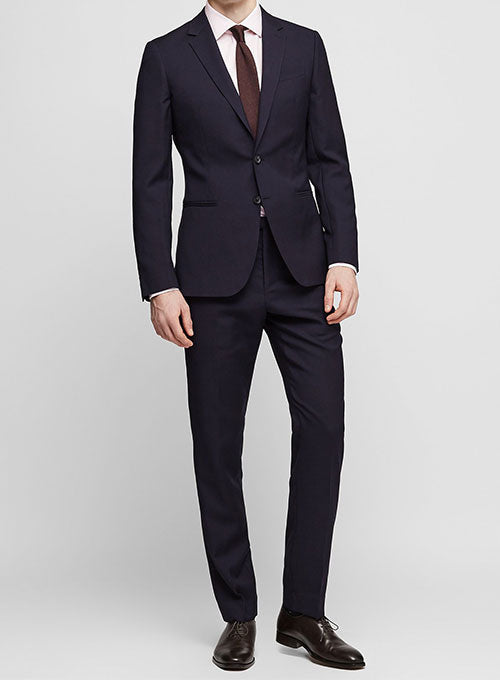Recognizing the Tailoring Process: From Material Choice to Last Fitting for the Suitable Closet
The tailoring process is a complex interaction of art and scientific research, starting with the vital choice of material choice and culminating in the precise adjustments of last installations. Each material type brings distinct qualities that affect not just the aesthetic appeal but additionally the garment's long life and viability for various occasions.
Relevance of Textile Choice
Choosing the right textile is vital in the tailoring process, as it straight affects the comfort, durability, and total visual of the final garment. The option of material sets the structure for the garment's efficiency, functionality, and design. Various fabrics have special homes, such as breathability, stretch, and weight, which can considerably influence exactly how the garment drapes and fits the body.

A tailored item made from an ideal textile not only showcases craftsmanship but likewise raises the user's confidence. Subsequently, recognizing the subtleties of fabric choice is vital for any kind of customizing undertaking. It ensures that the end product not only meets the visual needs of the customer yet additionally straightens with useful needs, therefore attaining an unified equilibrium between form and function in the tailored closet.
Kinds of Fabrics and Their Usages
Comprehending the different kinds of materials available is vital for making informed choices throughout the customizing process. Each material possesses unique features that dictate its suitability for specific garments and occasions.
Cotton, known for its breathability and soft qualities, is excellent for informal wear and summertime clothes. Its convenience permits it to be tailored into whatever from t shirts to gowns. Wool, on the other hand, is preferred for its warmth and structure, making it a superb option for formal matches and outerwear. Its all-natural elasticity aids garments preserve shape with time.
Silk exudes deluxe and is lightweight, making it excellent for eveningwear and delicate shirts; nevertheless, it requires mindful handling due to its delicacy. Linen, with its distinctive surface, is a preferred option for cozy climates, supplying a crisp and airy feeling, but it wrinkles quickly, which may impact the garment's look.
Synthetic textiles, such as polyester and nylon, offer longevity and resistance to wrinkles, making them ideal for daily wear and energetic clothing. Recognizing these fabric types and their residential or commercial properties permits better decision-making, making sure that each customized piece not just fits well yet also straightens with the intended function and celebration.
The Tailoring Techniques Discussed
The art of customizing relies on a range of strategies that change fabric right into well-fitted garments. Central to this procedure is pattern drafting, where a tailor produces layouts based on the client's dimensions and preferred design. This first step makes sure that the garment will certainly fit the wearer correctly prior to any kind of reducing occurs.
Once patterns are established, reducing strategies enter play. Precision is critical as mistakes can cause misfitting garments. Tailors usually utilize various cutting techniques, such as single-layer reducing for complex layouts and multiple-layer reducing for performance on standard patterns.
Basting is another vital method, enabling dressmakers to briefly sew material assemble for an initial installation (top tailor perth). This method provides the opportunity to evaluate the drape and overall silhouette before final sewing
Seaming strategies, consisting of flat-felled joints and French joints, improve the garment's sturdiness and aesthetic charm. Tailors also employ techniques such as interfacing and padding to give framework and form to certain areas, like collars and shoulders.
Lastly, finishing strategies, consisting of hemming and side completing, guarantee the garment's longevity while giving a sleek appearance. Together, these techniques create the foundation of efficient tailoring, causing elegant, tailor-made apparel.

Fitting Changes and Considerations
After the first tailoring methods have actually been applied and the garment is created, fitting modifications come to be critical to attaining the ideal fit. These changes address different facets of the garment, ensuring it contours to the wearer's body form and enhances general look.

The rise of trousers is another vital element; it should sit conveniently over the hips without creating pain, permitting ease of movement. Hemming lengths for both pants and skirts ought to reflect the wearer's recommended design while appreciating proportions.
Moreover, focus should be provided to the rear of the garment, ensuring that there are no unpleasant pulls or excess textile - top tailor perth. Each adjustment needs to be thoroughly thought about, as also small modifications can significantly influence the general fit and Check This Out aesthetic of the customized piece, ultimately bring about a closet that exhibits self-confidence and class
Maintaining Your Tailored Garments
Always adhere to the care tag instructions, which may advise dry cleansing for fragile fabrics or equipment washing for more sturdy materials. Prevent constant laundering, as this can use down the textile and alter the garment's shape.
Storage space is equally essential; usage padded hangers for coats and layers to maintain shoulder structure, and shop pants folded neatly or hung to stop creasing. Protect garments from direct sunshine, which can discolor colors and damage fibers.
In addition, periodic inspections for minor repair work can avoid larger problems. Look for loose buttons, fraying seams, or signs of moth damage, dealing with these problems quickly to preserve the garment's integrity.
Lastly, consider seasonal rotation. Wearing customized items in small amounts visit this web-site permits materials to recuperate, prolonging their life expectancy. By executing these maintenance strategies, you can ensure that your tailored garments continue to be as immaculate as the day you initially wore them, enhancing your perfect wardrobe for several years ahead.
Verdict
The customizing process, incorporating fabric option, experienced strategies, and accurate suitable modifications, plays a critical function in developing garments that improve both convenience and style. Recognizing the importance of upkeep extends the life of tailored garments, strengthening their value in a well-curated closet.